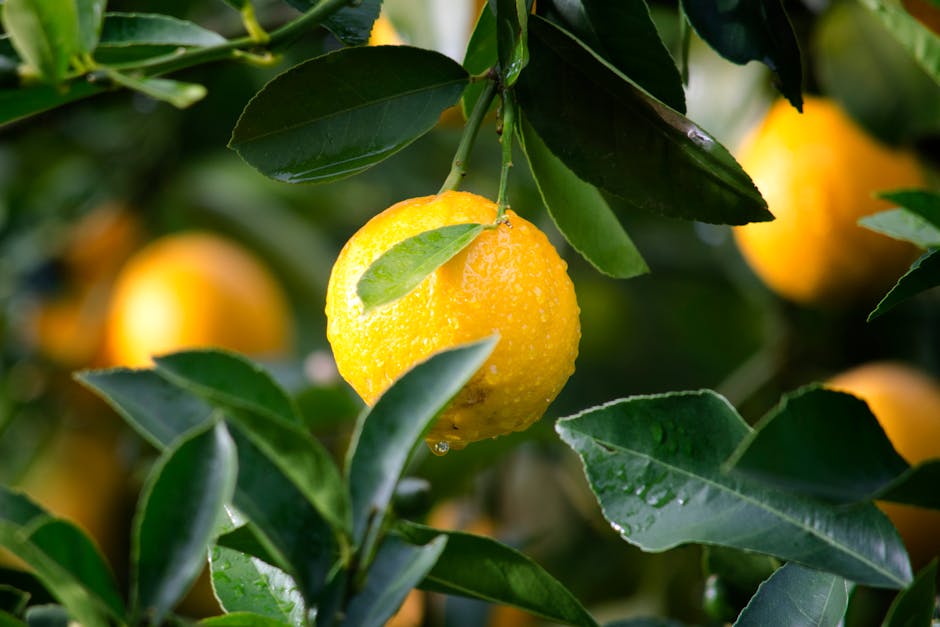Have you ever thought about bringing a burst of sunshine and a little piece of nature into your urban home by growing citrus trees indoors? It may seem challenging, especially if living space is limited, but there’s something quite magical about nurturing a citrus tree in your living room or kitchen. Not only do these vibrant and aromatic trees provide a delightful corner of leafy green, but they also offer blossoms that play a critical role in supporting pollinators like bees and butterflies.
This image is property of pixabay.com.
The Joy of Growing Citrus Indoors
Indoor citrus trees are more than decorative elements; they are living reminders of nature’s resilience and versatility. Growing them indoors allows you to savor the pleasures of small-scale gardening, even in the heart of a bustling city. The fresh scent of citrus blossoms can invigorate your space, while the promise of homegrown fruit will reward your patience and care. Plus, the opportunities for supporting pollinators can enrich your urban environment.
Choosing the Right Variety
When selecting a citrus tree to grow indoors, consider the size of both your space and the tree. Varieties like Meyer lemon, Calamondin orange, and dwarf lime trees are compact and well-suited for indoor environments. These types are not only ornamental but can also adapt well to the constraints of indoor living.
Mimicking Natural Conditions
Citrus trees naturally thrive in environments with warm, sunny climates. To recreate these conditions indoors, place your tree in a south-facing window where it can soak up as much sunlight as possible. If natural light is insufficient, a grow light can supplement the light needs. Aim to maintain a temperature between 65-85°F during the day, and a little cooler at night to mimic their natural habitat.
Watering and Nutrition
Citrus trees prefer a slightly moist environment, but be cautious not to overwater. The top inch of soil should dry out before watering again. Using a pot with good drainage holes can help prevent waterlogging. To keep your citrus tree healthy, utilize a citrus-specific fertilizer, which will provide key nutrients like nitrogen, phosphorus, and potassium that cater to their specific growth needs.
The Pollinator Connection
Growing a citrus tree indoors can contribute to the local pollinator population, offering bees and butterflies a much-needed oasis in urban environments. Encouraging pollination indoors might seem unconventional, but it can be achieved by gently shaking the branches to help pollen move from blossom to blossom. This supports your tree’s fruit production and replicates the role that wind naturally plays outdoors.
Simple Ways to Encourage Indoor Pollinators
To further enhance your indoor garden’s appeal to pollinators, consider adding flowering plants alongside your citrus tree. Varieties like lavender or marigolds not only bring color to your home but also attract pollinators with their nectar-rich blooms.
The Ecological Benefits
Supporting pollinators inside your urban dwelling underscores the importance of biodiversity even in metropolitan settings. Bees are critical to pollination, which impacts food production, ecological health, and plant diversity. By fostering an environment that’s friendly to these creatures, you contribute to a larger ecological balance.

This image is property of pixabay.com.
Troubleshooting Common Issues
Indoor gardening isn’t without its challenges, and citrus trees can suffer from common issues such as leaf drop, pests, and nutrient deficiencies. Understanding these problems and addressing them promptly can save your citrus tree from unnecessary stress.
Pests and Diseases
Common pests include aphids, spider mites, and scale insects. Regularly inspect your tree for these pests and use insecticidal soap or neem oil to manage infestations naturally. Monitor your tree’s leaves for discoloration or wilting as signs of disease.
Nutrient Deficiencies
The signs of nutrient deficiencies can manifest as yellowing leaves or reduced fruit production. Ensure your tree receives a balanced diet by using a citrus-specific fertilizer and occasionally supplementing with micronutrient sprays if required.
Creating a Citrus-Friendly Atmosphere
To create a nurturing atmosphere for your citrus tree, humidity is key. Indoor environments, especially during winter, can become dry and unfriendly for humidity-loving plants. Utilize a humidifier or a simple pebble tray with water to increase surrounding moisture levels.
The Role of Air Circulation
Proper air circulation can help prevent the buildup of harmful mold and fungi. Ensure your tree is placed in a well-ventilated area, and occasionally fan the air around it to stimulate airflow.
Restoring Balance With Indoor Plants
Incorporating other companion plants that favor similar growing conditions can restore balance and harmony to your indoor garden. Matching their water, light, and humidity needs with your citrus tree makes maintenance more approachable for you.
This image is property of pixabay.com.
Final Thoughts
Growing a citrus tree indoors in an urban home can transform your environment into a green sanctuary that supports biodiversity. A flourishing citrus tree brings together the elements of light, air, and nature into your living space, offering a restive yet dynamic presence. It provides nourishment for both you and passing pollinators in the grand tapestry of ecological coexistence.
Takeaway Tip
For those just beginning their indoor citrus journey, remember that gardening is an exercise in patience and observation. Each leaf and bloom tells a story of ongoing growth and adaptation. Consider starting small with a single tree, learn from its responses to your care, and gradually expand your indoor garden over time.
Embark on this rewarding endeavor with the knowledge that every step you take promotes sustainability and supports the vital web of life of which we’re all part. Consider exploring other articles about indoor gardening or download a comprehensive planting guide to further enrich your green space and benefit our earth’s precious pollinators.
